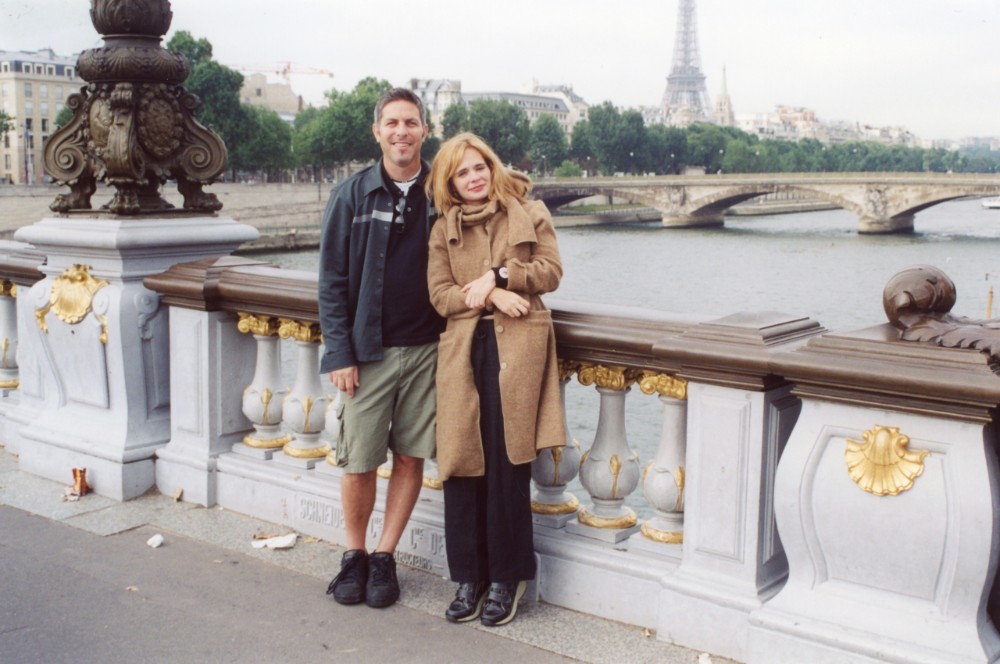
On November 1, 2006, actress and writer Adrienne Shelly, best known for writing and directing the film Waitress, later translated into the 2016 Tony Award-winning musical, was found dead in her Greenwich Village office. The unfortunate discovery was made by her husband, Andy Ostroy. Fifteen years later, Ostroy has directed and produced the HBO documentary, Adrienne, in which he explores the circumstances of her death while celebrating her life and career.
As a first-time documentary filmmaker, Ostroy attempts to find closure with this senseless tragedy, and, using his journalism background, honors her legacy by delving into interviews with Shelly’s mother, brother, stepchildren, colleagues, and friends. Ostroy features her diary writings and letters she wrote, read by their now 18-year-old daughter, Sophie, who was almost three years old at the time of her mother’s death. They illustrate the ways in which they continue to keep her memories alive.
In the film, Ostroy also investigates Shelly’s death, which at first was ruled a suicide, until he pressured police and the New York media to discover the truth of her murder. Ostroy makes a brave journey, coming face to face with his wife’s killer in prison, where he is currently serving 25 years.
Below The Line spoke with Ostroy about the making of this very poignant and personal documentary. He discusses the interviews he conducted and what his initial intentions were in telling Shelly’s story, his daughter’s credits in the film and the motivation behind making it. Still grappling with ongoing grief, he discusses the way the documentary changes the narrative of her life, and how unintentionally it has inspired others.
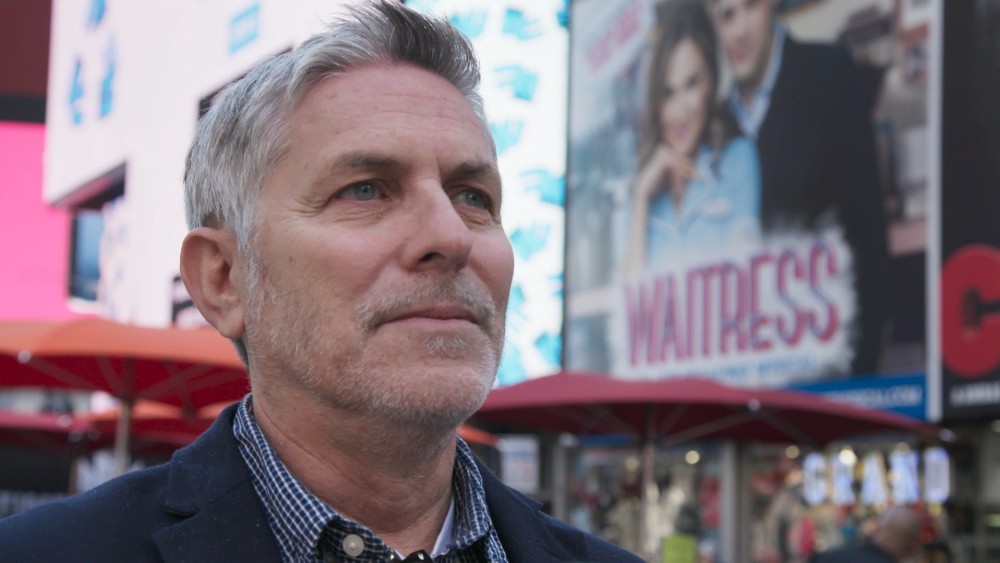
Below The Line: What inspired you to tell this story?
Andy Ostroy: Over the years, I had this compulsion to humanize Adrienne. The years were going by quickly, and I felt that people were just not remembering her for who she was as a person, but just as a tragic murder victim. One night, I took her mom to see the musical [Waitress] on Broadway and she got to talking before the curtain went up with a group of out-of-town women sitting behind us, and shared that her daughter was involved, and this was her thing but didn’t get specific. She told them her name, and one of them said, “Oh, that’s great. Is she here tonight?” It got me thinking that out of the 1,100 audience members, how many were not knowing who Adrienne was? That really started in my process that I should really make a film. I had been working on a book about her, and it was taking me forever. I just decided that she was a filmmaker and a storyteller, so the most fitting tribute and honor that I could make to her would be to make a film about her.
BTL: Did you have any interviewing experience before you embarked on this documentary?
Ostroy: One of the things that ultimately gave me the confidence to be able to do this, is that I have a journalism degree, and I’ve spent years writing various things. The interviewing part and creating the questions became very natural to me. It was in my wheelhouse on some level. I’d never directed a film before or worked on a film, but the documentary is going to be about talking to and interviewing people. That’s a big chunk of the film, and there I do have experience and strengths that I could bring to the table. The questions were easy to ask. The first few interviews I did, I had pages of notes, and I even brought them with me. Then I realized it’s all in my head, so just ask. Then it became conversational and easy.
BTL: How did you decide who your interview subjects were going to be?
Ostroy: It was a combination of deciding which, obviously, family members and friends and people she’s worked with. The story was always going to be about “life, death, and the aftermath,” which got me thinking about the police and the medical examiner and people who could fill in certain blanks. Not in a sensational way, but in real critical ways that would move the overall story along.
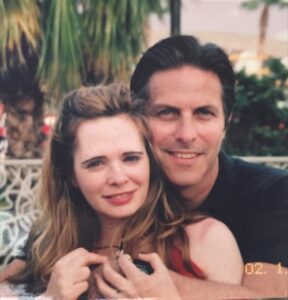
BTL: You also appear in the film. Who did your interview pieces?
Ostroy: Marc Levin, our executive producer, and a great documentary filmmaker. There were some things I decided not to delve into. There were certain questions that I didn’t necessarily want to answer on a more personal level. There may have been one or two, but it was just more about it’s not going to make it into the film. That part I directed myself as well. Marc interviewed me but as the director, every interview, including my own, was directed by the vision of where we needed to go.
BTL: This is your first time making a documentary. What did you learn?
Ostroy: One of the things I learned about making a film as we got into it is you’ve got to stay on track. You can get easily distracted. And in my thinking, I saw the end where I wanted to go and it was a straight line. But you always have the opportunity to take a detour or go this way for five minutes. I learned that every detour is just going to take you off track.
BTL: Can you talk about the animation moments in the film that illustrate discussions with your daughter Sophie?
Ostroy: She was two and three-quarters old when her mother died, and now she’s almost 18. Sophie, as you see from watching the film, plays a major role. She has a very interesting arc, and unfortunately, while I had these incredible conversations with her written down verbatim, I didn’t have footage of her. So in telling her story, and furthering her arc, from a cinematic standpoint, it just became obvious that it would be very poignant and beautiful in a way, although heartbreaking, to put them to animations. It’s as if we were watching footage.
BTL: Had you recorded those conversations with Sophie over the years, or did you re-enact them?
Ostroy: I would sit on her bed at night and we would talk. I had this little Blackberry and I would just be typing everything word for word. The first one, she was two and three quarters and I can’t believe how articulate she was at that age. Adrienne always used to boast that Sophie knew a lot of words and I was like, “Yeah, okay, whatever, great.” Now I understood why she was so impressed in reflecting back on them. Then, when she got older she used to look at me funny, “Daddy is listening to everything I’m saying,” and just writing it all down, because someday you’re gonna want this stuff. I was really glad that I did that. I didn’t know what I would do with it, but when I decided to make the film, it was like, “Wow.” I was so happy that I had those to look back on. In the first one where she’s talking about, “If we give mommy chicken will she come back?” She was not even three. So understanding the mind of how a young child grapples with all this intensely powerful adult stuff, and over the years the questions become more specific. A therapist that I spoke to very, very early on said follow her lead. If she asks, she wants to know the answers. So when she asked how did he kill her, I said, “He choked her, put a rope around her neck, and made it like she killed herself.” She wanted to know, and I was just trying to be honest with her.
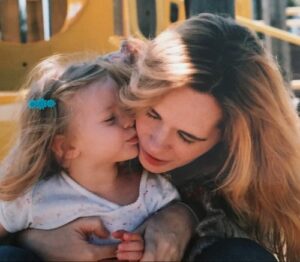
BTL: Did you visit Paris with Sophie for the sake of the film, or was this home video footage?
Ostroy: Prior to the pandemic, we traveled a lot. I took her to Rome and she loved Paris. For a few reasons, it made sense for us to go when we went. Part of that trip was to take her on a journey back in time to relive where her mom and I got engaged. She was totally into it and it ended up being a really nice part of the film. Sophie shot that. This kid’s got three credits in the movie. She’s additional camera, PA, and behind-the-scenes photography. She was very involved on the film. She was at a lot of the interviews and learned a lot about her mother in those interviews. She was on both trips to L.A. The crew loved her and she loved the crew. It was a really good experience for her. I think it really opened her eyes as to what her mother did for a living. She got to live it which was also part of my motivation for making the film. Working on the film helped to understand what her mother did.
BTL: What interview footage did not make it into the film?
Ostroy: Like most interviews, most of the footage remains on the floor. We sat with Adrienne’s killer for more time than you see in the film, but the critical parts of that interview are what made it into the film. That being the two motivators for meeting him, which was, to find out what really happened that day, and also to humanize Adrienne for him so that he saw her as a wife, a mother, a daughter, a sister, a friend. Rather than just someone who was running at him screaming, “Police,” and who he killed.
BTL: That interview must have been incredibly difficult for you to get through.
Ostroy: At the end of that scene where he leaves, you see me let go. It was like a dam bursting because, during the interview, I made it my business to stay as composed as possible. Although I was very emotional at times, but when he walked out of the room is when the real power of that moment kicked in. It was in the planning for a couple of years, but in my head, for 15 years as I always knew I’d have to sit with him. It’s the way I’m wired. I just can’t not know stuff. This is the biggest event in my life and I need to know what happened.
BTL: Did you have revelations about Adrienne while doing these interviews?
Ostroy: The only thing that stood out to me, interview after interview, I realized she was even more amazing than I knew first hand. That made me sadder because it just compounded the loss that I already felt. It made me realize how special she was and unique she was, hearing their anecdotes from everyone. I only knew her for five years and met her when she was 37, so she had a life before that. Hearing how she treated people and how they were inspired by her was incredible to hear.
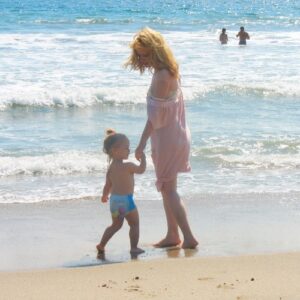 BTL: Did you achieve what you set out to do in this documentary?
BTL: Did you achieve what you set out to do in this documentary?
Ostroy: The original intent of the film was to answer three questions: “Who was Adrienne Shelly, what really happened to her on November 1, 2006, and what is it like for a family to navigate an unthinkable tragedy?” The film does answer those three questions. I always assumed it would impact people in various ways. I’ve gotten a lot of feedback on social media how the film has inspired people to be their better selves. One woman, in particular, said if a good documentary only impacts one person’s life then it was worth it. I also was hoping that if people found themselves in a similar situation (where we fought for Adrienne through the media to tell the true story) might feel empowered to fight it, if they couldn’t before. Her legacy hopefully is about to turn in the way that I had hoped which is more of a human, more of a filmmaker, more of an amazing talent who left so much on the table. Rather than, “oh, isn’t it horrible what happened to her.” When I did interviews at the Broadway show the first thing that people said to me, “oh she was the one that got murdered.” I hope her legacy continues to be built on her work, and her as a person. I’ve been working on this for 15 years and will probably continue in other ways until the day I die, for her, for my daughter. You know I was madly in love, and then it was gone. For anyone who’s ever felt that they would totally understand why I do what I do.
BTL: Does the film bring you and your daughter closure at all?
Ostroy: I address that a little bit in the film, but the answer is “no.” There is no cathartic outcome. There is no healing. There is no closure. I don’t really understand that concept. There is no day that arrives where someone goes, “Okay, I don’t feel that pain. I’m good.” Does that ever really happen? I think closure is making a conscious decision to move on and then they bury stuff. Your mother dies, your father dies, your sister dies, a young child dies. How do you ever get closure? So for me, there’s no closure, like, “I’m glad I made the film, gee I feel great now.” The film provided what it was supposed to accomplish, which was to bring her back to life for 99 minutes, to make people fall in love with her, to then make them grieve her loss the way we do, and to maybe change their lives in some way. In that sense, it’s deeply gratifying.
Adrienne is now playing on HBO and streaming on HBO Max. All pictures courtesy HBO and Mr. Ostroy.





